
The solar system demonstrates a complex arrangement. The Sun occupies the central position, with various other celestial entities orbiting around it, such as planets, asteroids, and comets. Within the Earth group, we can find Mercury, Venus, Earth, and Mars. In contrast, Jupiter, Saturn, Uranus, and Neptune are located at a significant distance and are recognized as colossal planets. Additionally, there exists an asteroid belt situated between Jupiter and Mars.
The composition of the massive planets
These celestial bodies are referred to as giants due to their immense mass, which is several times greater than that of our planet Earth. In fact, these four planets collectively account for a staggering 99% of the total mass within our solar system.
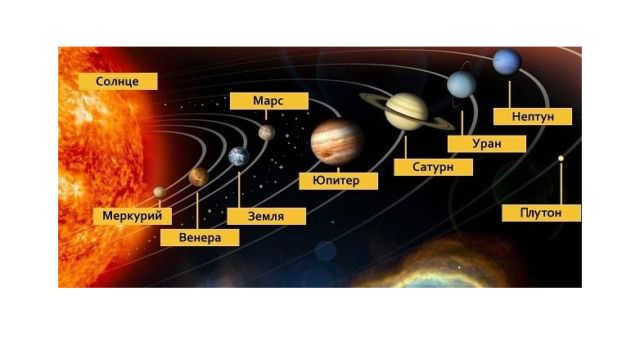
The unique characteristic of giant planets lies in their composition. These celestial bodies consist of a variety of simple and complex compounds with a relatively low boiling point. This peculiarity is due to the presence of gaseous compounds and ice in their composition.
Jupiter and Saturn are primarily composed of hydrogen and helium, which classifies them as gas giants. On the other hand, Uranus and Neptune are predominantly made up of ice, earning them the title of ice giants. It is important to note that the ice found in these celestial bodies is different from the ice we commonly associate with on Earth. Instead, it refers to frozen gases such as methane and ammonia.
In 2016, American astronomers made an intriguing announcement regarding the existence of a potential ninth planet. This hypothetical planet is believed to be located beyond the orbit of Pluto and is estimated to be approximately nine times the size of Earth. The likelihood of its existence is currently estimated at 90%.
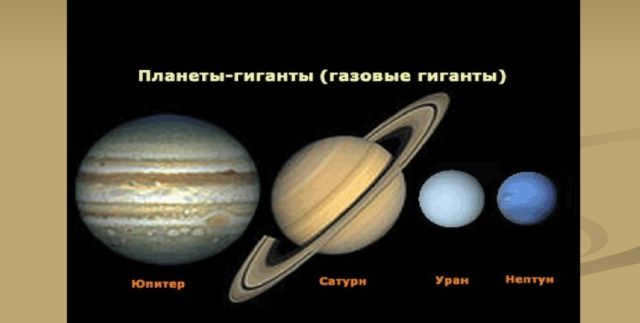
There are only three states of matter. If it is not in a liquid or gaseous form, then it is in a solid state. The surface of planets is solid, composed of gases in a solid state.
Planets’ Characteristics
All giant planets are believed to have rings surrounding them. Only Saturn has its rings clearly visible. They also possess atmospheres, enormous sizes, and numerous satellites.
The number of satellites and their mass are given in the table below.
Comparison of Mass with Earth’s Mass
Names of Major Satellites
Io, Europa, Ganymede, Callisto.
Titania, Oberon, Umbriel, Ariel, Miranda.
The interior of Jupiter is extremely hot. This has influenced the formation of atmospheric vortices and the occurrence of the Great Red Spot.
Saturn possesses the lowest density, which is even less than that of water. Uranus orbits the Sun while being tilted on its side.
Research has revealed that the giant planets serve as a shield, protecting the Earth from the potentially harmful impact of comets and asteroids.
Scientists have recently made the remarkable discovery of water geysers on Saturn’s moon Enceladus. These geysers reach astonishing heights of hundreds of kilometers.
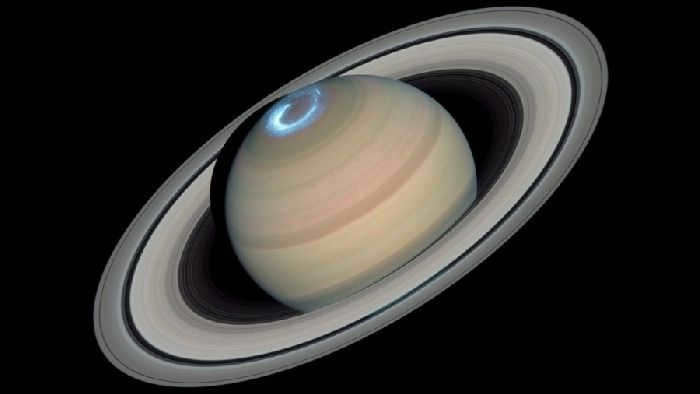
The arrangement of the solar system, as well as the colossal planets, are succinctly discussed in the 5th-grade geography curriculum.
What have we acquired?
There exist colossal planets in terms of size and mass: Jupiter, Saturn, Uranus, and Neptune. These celestial entities are composed of gaseous matter in a solid state. An important characteristic is the presence of an atmosphere. One distinguishing feature of the giants is the possession of rings and a substantial number of satellites.
Which planets in the Solar System are classified as giant?
Giant planets refer to planets that are exceptionally large in size. They can either be composed of solid materials or consist of gases. In our solar system, the gas giants include Jupiter and Saturn, while Neptune and Uranus are categorized as ice giants. Note 1
The classification of giant planets into ice giants and gas giants is a relatively new development in the field of astronomy. In older educational materials, Jupiter, Saturn, Uranus, and Neptune were commonly grouped together as gas giants.
Distinctive Characteristics and Structure of Giant Planets
Giant planets, unlike their counterparts in the Earth group, possess immense mass and size. The pressure within their interiors surpasses that of Earth. Moreover, their atmospheres are more expansive and vigorous, while their rotation is swifter. Giant planets also boast a greater number of satellites and are encircled by rings – flat disks composed of ice and dust that revolve around their equators. Helium and hydrogen serve as the principal constituents of Saturn and Jupiter, whereas methane, ammonia, and water fulfill this role in the case of Neptune and Uranus. It is worth noting that the terms “icy” and “gaseous” are somewhat arbitrary, as the substances comprising giant planets exist in an intermediate state between solid and gaseous.
Comparisons and Contrasts, Table, Concise Description
The solar system’s giant planets exhibit both similarities and differences. Each planet possesses unique physical characteristics, properties, and temperature regimes.
Jupiter
Jupiter is 318 times more massive than Earth. It maintains an extremely high internal temperature, resulting in the presence of various atmospheric vortex structures, such as the well-known red spots and cloud bands. The planet is orbited by a total of 79 satellites, with the largest ones being Callisto, Europa, Io, and Ganymede. Similar to Earth-like planets, these satellites display volcanic activity and possess a glowing core. Definition
Ganymede is a permanent satellite of Jupiter that surpasses Mercury in both mass and size, making it the largest satellite in the entire solar system.
Saturn has a mass that is 95 times greater than Earth. It is the least dense planet in the solar system and is similar in composition and structure to Jupiter. Scientists have confirmed the existence of 82 satellites orbiting Saturn. Two of these satellites, Enceladus and Titan, show signs of geological activity. However, this activity is different from that on Earth, as it is caused by processes occurring in ice rather than rock.
In addition to its satellites, Saturn is also famous for its rings. These rings are numerous and create a complex structure with large gaps and subtle divisions.
Uranus
Uranus holds the distinction of being the lightest member among the gas giants, yet it possesses a mass that is 14 times greater than that of Earth. What sets Uranus apart is its distinctive rotational behavior: the planet actually spins on its side, with its axis tilted at an angle of 98 degrees in relation to the ecliptic plane. This unique characteristic is often likened to a giant rolling ball, in stark contrast to the more traditional spinning motion exhibited by the other planets.
Furthermore, Uranus stands out due to its exceptionally cold core, resulting in the release of minimal amounts of heat into space.
Neptune
Neptune is smaller than Uranus in terms of size, but it has a greater mass – its mass is 17 times that of Earth. Neptune is characterized by its high density and the emission of heat. It is also known to have 14 satellites and a number of Trojan asteroids that are in orbital resonance with it. One of its most notable satellites is Triton. Triton is of particular interest to scientists because it moves in the opposite direction of Neptune’s rotation, has geysers of liquid nitrogen, and exhibits geological activity. Comparative characteristics: Source: demo.videouroki.net
Is the teacher not providing a clear explanation of the subject matter?
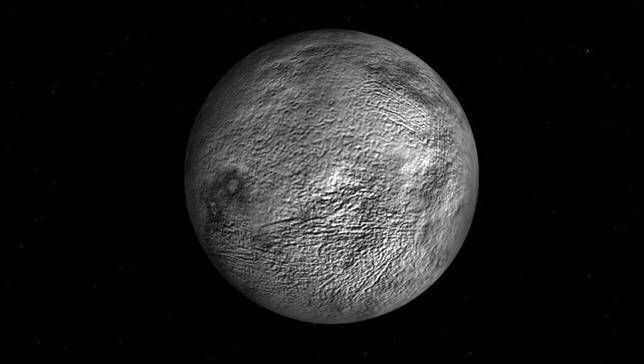
Erida is one of the largest known dwarf planets in our solar system. It has a similar size to Pluto but is positioned three times farther away from the Sun.
Upon its discovery in 2005, astronomers initially believed that Erida was significantly larger than Pluto, leading to speculation about it possibly being the 10th planet in our solar system.
However, the subsequent realization that Erida is actually a small planet was a pivotal factor in the decision to reclassify Pluto as a dwarf planet in 2006. This decision continues to be a subject of controversy, which adds significance to the name of Erida.
“Erida is the Greek goddess of strife.” – stated astronomer Mike Brown, a member of the Eris research team, in a statement released by the California Institute of Technology.
What planets are considered giant planets?
Giant planets, also known as Jupiterian planets, include Saturn, Neptune, Uranus, and Jupiter.
Jupiter is the largest planet in our Solar System and is the fifth farthest from the Sun, at a distance of 5.2 astronomical units. It emits thermal radiation and has a radiation belt as well as a wide magnetic field. Jupiter has a total of 69 satellites and a ring system with a width of approximately 6,000 kilometers.
Saturn is the second largest object in our solar system. It is surrounded by visible rings that were first observed by Galileo in the 17th century with the help of his telescope. The rings are flat and consist of various small satellites, totaling 62 in number. Saturn also has its own radiation belt.
Uranus is positioned as the seventh planet from the Sun. It proudly boasts a total of 15 satellites, with 5 of them being visible from the Earth’s surface. Furthermore, the Voyager 2 spacecraft managed to observe an additional 10 satellites around Uranus. As if that wasn’t enough, this fascinating planet also possesses its very own ring system.
Neptune, on the other hand, holds the prestigious title of being the most distant planet from the Sun among all the planets that have been studied. It resides at a staggering distance of about 30 astronomical units from the Sun. With a rotation period of nearly 165 years, Neptune is truly a marvel of our solar system. In terms of satellites, it is accompanied by a modest count of 6. Due to its considerable distance from the Earth’s surface, Neptune poses a significant challenge when it comes to exploration and study.
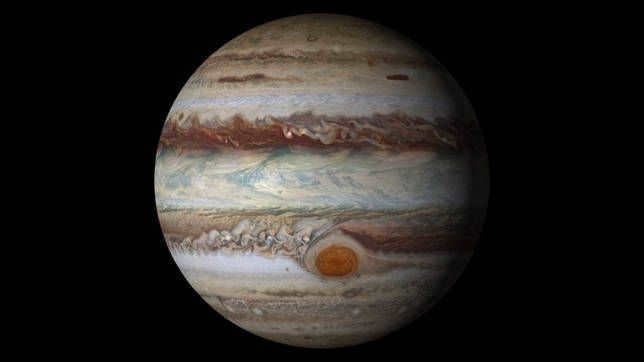
Pluto, with a diameter of 2374 kilometers
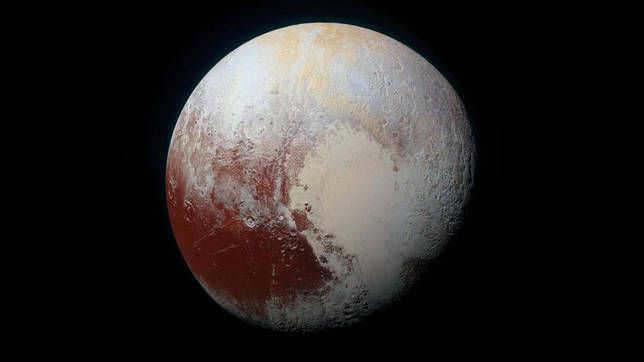
Pluto is the biggest member of a group of objects that revolve around a disk-shaped region beyond the orbit of Neptune known as the Kuiper Belt. This distant area is home to thousands of small icy worlds that formed at the start of our solar system approximately 4.5 billion years ago.
Given the name of a Roman ruler of the underworld, Pluto has become a surprising source of controversy within the astronomical community and among space enthusiasts worldwide. In a contentious decision in 2006, Pluto was officially demoted from its planetary status, leaving our solar system with just eight planets.
Comparative Characteristics of the Giant Planets
| Size | 69911 km | 58232 km | 25362 km | 24622 km |
| Mass, in Earth masses (5.97-10 |
Sources Utilized
Didn’t find what you were searching for? Feel free to utilize the website’s search form.
Mercury: 4879.4 km
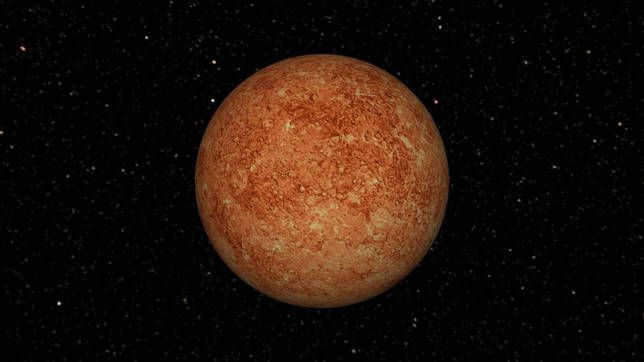
Like Venus, Earth, and Mars, Mercury is classified as a terrestrial planet. It possesses a solid surface adorned with craters. Its atmosphere is thin and it lacks any natural satellites. Mercury prefers simplicity.
This modest celestial body exhibits a leisurely rotation in comparison to Earth, resulting in extended days. It requires 59 Earth days to complete one full rotation. Conversely, a year on Mercury passes swiftly, as it completes one orbit around the Sun in only 88 Earth days. If you were a resident of Mercury, you would commemorate your birthday every three months!
Mars, with a diameter of 6780 kilometers
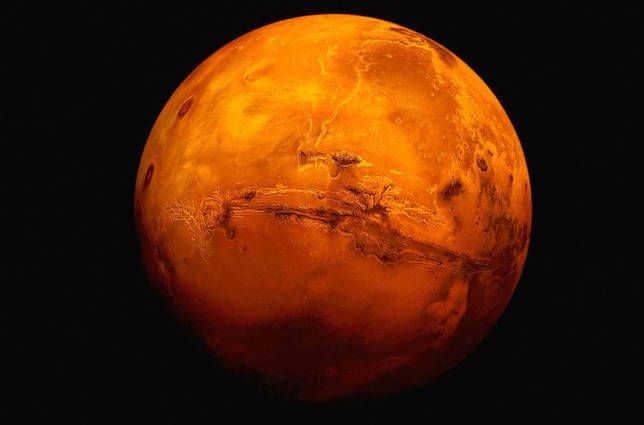
Over the past fifteen years, our knowledge of the condition and progress of Mars has significantly progressed due to the success of numerous space missions, both in orbit and on the surface of Mars (Mars Express orbiter, MER Spirit and Opportunity rovers, Mars Reconnaissance Orbiter, Phoenix lander, Curiosity rover, MAVEN orbiter, ExoMars / Trace Gas orbiter, and finally InSight).
With the availability of this new information, we are now able to address the key inquiries about our home planet. While Mars Express and MRO have enhanced our understanding of the planet’s geology, mineralogy, and composition on a large scale, the MER and Curiosity rovers have provided us with an analysis of rock samples and their surroundings.
Venus, with a diameter of 12,103.6 kilometers
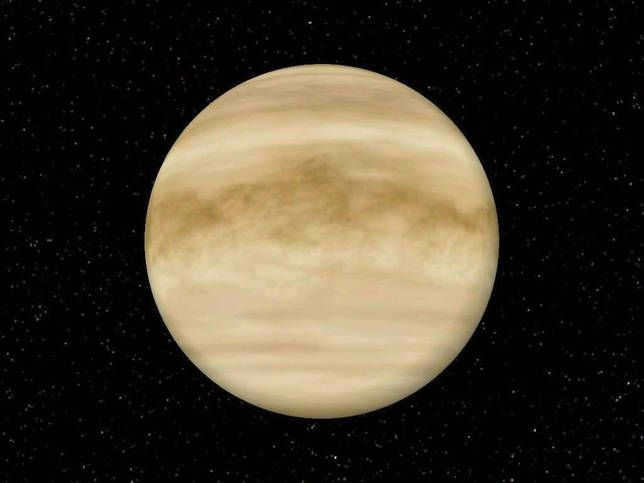
Venus was one of the anciently known five planets – along with Mercury, Mars, Jupiter, and Saturn – and was extensively observed and studied for centuries prior to the invention of advanced astronomical instruments.
The Babylonians, around 3000 BC, recorded Venus’ appearances and associated it with the goddess Ishtar. It is also mentioned in the astronomical records of various other ancient civilizations, including China, Central America, Egypt, and Greece.
Due to its close proximity to Earth, Venus has been observed numerous times by ancient astronomers from different cultures. However, the first accurate observation was made by Galileo in 1610.
The planet Earth has a diameter of 12742 kilometers.
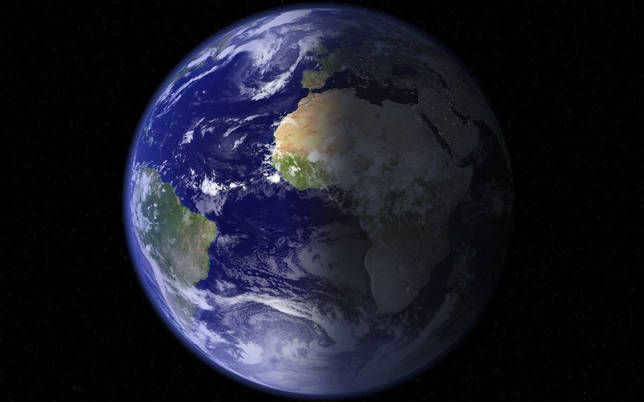
The Earth, our planet of residence, is an extraordinary world unlike any other. Positioned as the third celestial body from the Sun, Earth stands alone as the sole known habitat for life in the entire universe.
Despite our inability to feel it, Earth diligently completes its orbit at an average velocity of 18.5 miles per second. Throughout this remarkable journey, our planet maintains an average distance of 93 million miles from its solar counterpart, a span that light traverses in approximately eight minutes.
Astronomers classify this measurement as one astronomical unit (AU), representing a practical universal benchmark.
The immense planets are the most massive objects in our solar system
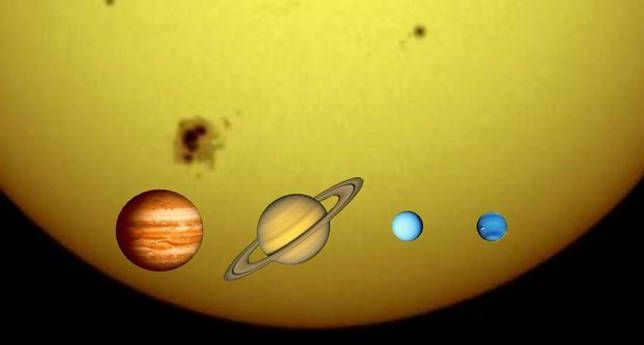
Giant planets are the largest celestial bodies in our Solar System following the Sun: Jupiter, Saturn, Uranus, and Neptune. These planets are situated beyond the Main Asteroid Belt and are often referred to as the “outer” planets.
Jupiter and Saturn are classified as gas giants, meaning they primarily consist of gaseous substances in solid form, such as hydrogen and helium.
In contrast, Uranus and Neptune are classified as ice giants due to their composition, which includes high-temperature ice instead of metallic hydrogen throughout their interiors.
The giant planets are significantly larger than Earth, but in comparison to the Sun, their size is relatively small:
According to computer simulations, giant planets have a crucial function in safeguarding the inner planets of the Earth group against asteroids and comets.
Without the presence of these celestial bodies in our solar system, the chances of Earth being struck by asteroids and comets would increase by hundreds of times!
Therefore, it is important to understand the mechanisms through which the giant planets shield us from these unwelcome visitors.
You may be familiar with the concept of “space slalom,” in which automated spacecraft sent to distant objects in the solar system perform “gravitational maneuvers” near certain planets. These spacecraft approach the planets along a pre-calculated path and use the planets’ gravity to gain even more speed, without actually crashing into them. It’s like being shot out of a slingshot, but with a higher velocity than when entering, allowing the spacecraft to continue its journey. This technique saves fuel that would otherwise be needed for engine acceleration.
Similarly, the giant planets in our solar system have a role in protecting Earth from asteroids and comets. These celestial bodies, which aim to reach the inner planets including Earth, can be thrown out of the solar system by the gravitational influence of giant planets like Jupiter. By increasing the speed of these asteroids, Jupiter alters their orbit, forcing them to change trajectory and venture into the vastness of space.
Therefore, without the presence of giant planets, life on Earth would likely be impossible due to the constant bombardment of meteors.
So, let’s briefly examine each of the massive planets.
What sets the giant planets apart from the Earth-like planets?
The Earth-like planets differ significantly from the giant planets, primarily in terms of their physical characteristics. This disparity can be attributed to their respective distances from the Sun and their individual masses.
The planets in the Earth group are positioned at a closer proximity to the Sun, leading to a higher intake of energy and a greater susceptibility to the warming effects of solar radiation. The temperature conditions on a planet increase as its distance from the center of the solar system decreases. Furthermore, planets exhibit variations in their chemical composition. Earth-like planets possess a minimal amount of light gases, but a significant abundance of refractory elements. On the other hand, planets like Jupiter have relatively low density due to their composition primarily consisting of lighter substances such as helium and hydrogen.
Planetary mass is determined by the presence of an atmosphere on the planet’s surface, as well as its properties. The greater the mass of a planet, the stronger its gravity. When the gravitational force weakens, a planet loses its atmosphere at a faster rate. The composition and density of the atmosphere are influenced by the distance from the center of the solar system.
Jovian planets have a higher rotational speed than other planets. Because of their fast rotation, these giant planets have a non-spherical shape, they are compressed. These planets have a large number of satellites and also possess ring systems, which are not characteristics of Earth-like planets. Earth-like planets only have a few Martian satellites and one terrestrial satellite.

Jupiter measures approximately 142,974 kilometers in diameter.
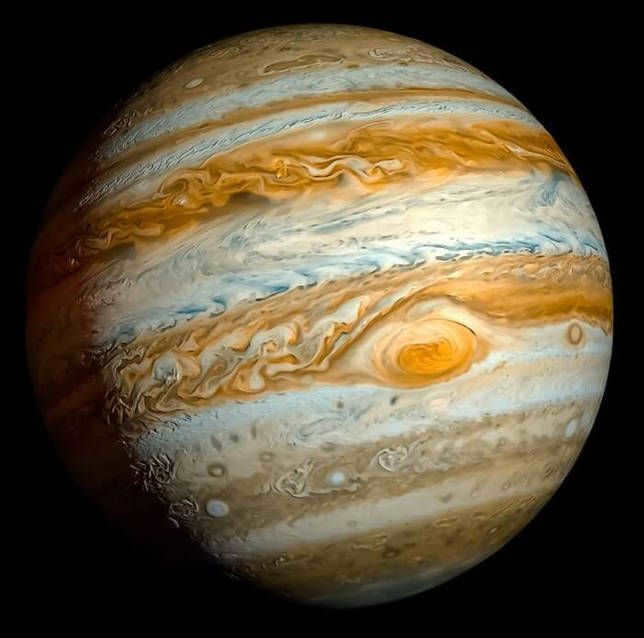
What do we know about Jupiter?
Before the telescope was invented, planets were observed as wanderers in the sky. This is why the word “planet” translates from Greek to “wanderer”. Currently, our solar system is known to have 8 planets, although initially 9 celestial objects were considered planets. However, in the 1990s, Pluto was reclassified as a dwarf planet, losing its status as a true planet. Jupiter is the largest planet in our solar system.
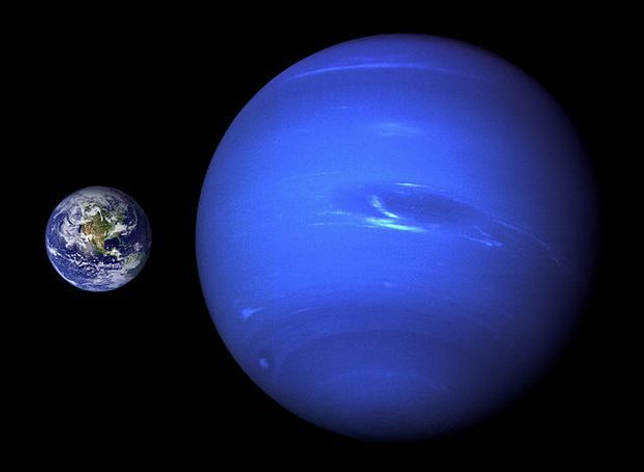

Comparing Jupiter to other planets in our solar system, its radius measures a staggering 69,911 km. This means that all the largest planets in our solar system could easily fit inside Jupiter (as depicted in the photo). To put it into perspective, Jupiter can accommodate approximately 1300 Earth-sized planets within its colossal body.
Jupiter, the fifth planet from the Sun, takes its name from the Roman god.
Often referred to as the gas giant of our solar system, Jupiter’s atmosphere is predominantly composed of helium and hydrogen gases. Beneath its gaseous surface lies an ocean of liquid hydrogen.
One remarkable feature of Jupiter is its immensely powerful magnetosphere, which is about 20,000 times stronger than Earth’s magnetosphere.
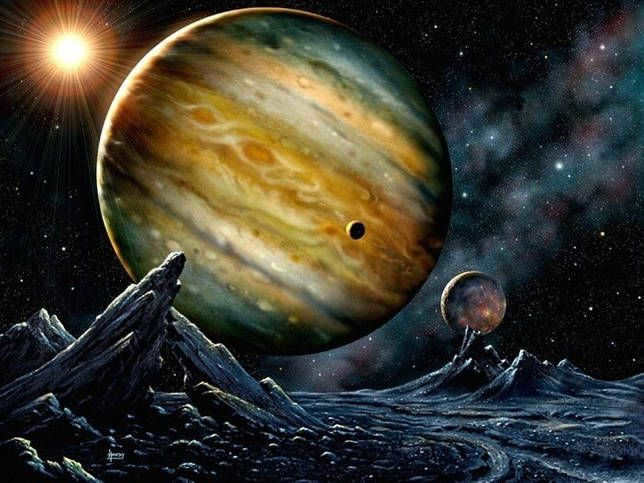

Jupiter, which is the biggest planet in our solar system, rotates on its axis at a faster rate than any of its neighboring planets. It completes one full rotation in less than 10 hours, whereas it takes Earth 24 hours to complete a full rotation. Due to this rapid rotation, Jupiter appears to be bulging at its equator and slightly flattened at its poles. In fact, the planet is approximately 7 percent wider at its equator than at its poles.
Jupiter, being the largest celestial body in our solar system, orbits around the Sun once every 11.86 Earth years.


Jupiter emits radio waves of such strength that they are detectable from Earth. There are two types of emissions:
- powerful bursts that occur when Io, the nearest of Jupiter’s large moons, passes through specific areas of the planet’s magnetic field;
- continuous radiation from Jupiter’s surface and energetic particles in its radiation belts. These radio waves have the potential to assist scientists in exploring the oceans on the moons of this colossal celestial body.
The most peculiar characteristic of Jupiter
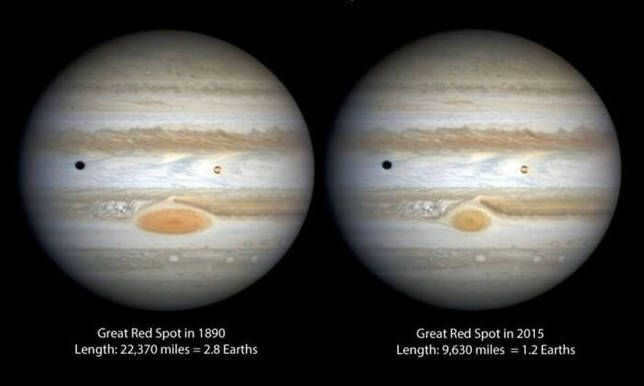
The Great Red Spot on Jupiter is without a doubt its most prominent feature, as this colossal hurricane has been raging for over three centuries.
- The diameter of the Great Red Spot is three times that of Earth, and it spins counterclockwise around its center at an astonishing speed of 360 kilometers per hour.
- The storm’s distinctive color, ranging from brick red to light brown, may be attributed to the presence of trace amounts of sulfur and phosphorus.
- Over time, the size of the storm fluctuates, sometimes expanding and other times contracting. A century ago, the spot was twice its current size and significantly brighter.
While there are numerous other storms on Jupiter, only those in the Southern Hemisphere tend to persist for extended periods.
Rings of Jupiter
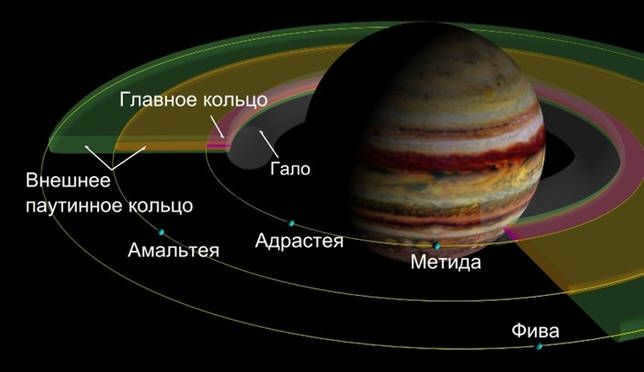

Unlike Saturn, whose rings are easily visible from Earth, Jupiter’s rings are much more challenging to observe. It wasn’t until 1979, when data from the Voyager 1 spacecraft was analyzed, that the existence of these rings was confirmed. However, their origin remained a mystery. It wasn’t until the Galileo spacecraft orbited Jupiter from 1995 to 2003 that it was discovered that these rings were formed by meteoroid impacts on small satellites orbiting the massive planet itself.
Jupiter’s ring system consists of:
- the halo – an inner layer composed of small particles;
- the main ring, which is brighter than the other two;
- the outer “spider web” ring.
The primary ring is compressed, measuring approximately 30 km in thickness and 6400 km in width. The halo stretches halfway down from the main ring to the uppermost layers of Jupiter’s clouds and expands as it interacts with the magnetic field of the planet. The third ring is referred to as the spider ring due to its translucent appearance.
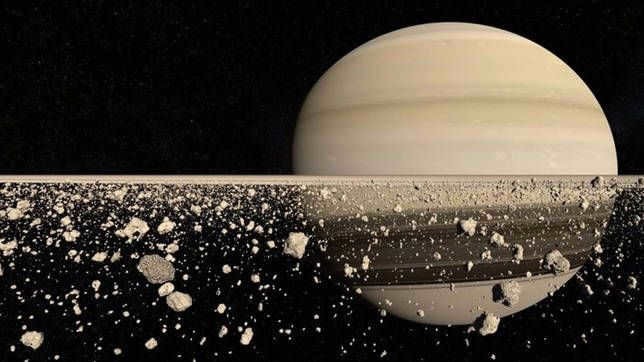
The impact of meteorites on the surface of the smaller inner moons of Jupiter creates dust particles that subsequently settle into orbit around the planet, resulting in the formation of rings.
Satellites of Jupiter
Jupiter is host to a total of 53 confirmed moons in its orbit, with an additional 14 moons awaiting official confirmation.
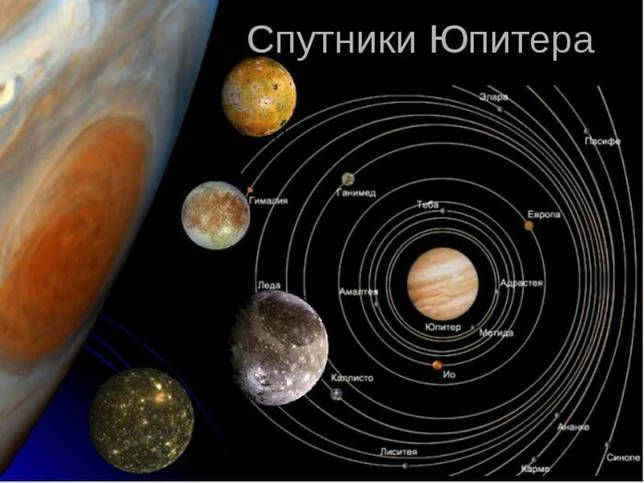
The Galilean satellites, namely Io, Ganymede, Europa, and Callisto, are the four largest moons of Jupiter. These celestial bodies were first observed by Galileo Galilei in 1610 and were subsequently named after Zeus’ loyal companions (known as Jupiter in Roman mythology).

Io is known for its active and powerful volcanoes; Europa is notable for its hidden ocean beneath its icy surface, which scientists believe may harbor life; Ganymede holds the distinction of being the largest moon in the entire solar system and possesses its own magnetic field; and Callisto stands out with its remarkably low reflectivity compared to the other Galilean satellites. Some scientists propose that the surface of Callisto is composed of a dark and featureless type of rock.
Watch the Video: Jupiter holds the title of being the largest planet in our solar system
We trust that we have provided a comprehensive response to the inquiry of which planet in the solar system is the biggest!
Saturn, with a diameter of 116,464 kilometers
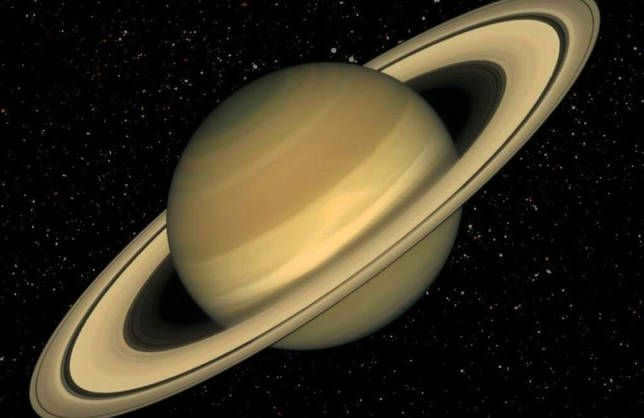
The name Saturn is derived from the Roman god of agriculture, who is associated with the Greek god Kronos, one of the mighty Titans and the father of Zeus (known as the Roman god Jupiter).
Being the farthest planet visible to ancient astronomers, Saturn was also recognized as the slowest in motion. Located at a distance 9.5 times that of Earth from the Sun, Saturn takes approximately 29.5 Earth years to complete one orbit around the Sun.
In 1610, the Italian astronomer Galileo became the first person to observe Saturn using a telescope. Despite noticing the peculiar appearance of Saturn, the limited resolution of his instrument prevented him from discerning the true nature of the planet’s rings.
Uranus: The Ice Giant Planet
Uranus is composed of a hydrogen and helium atmosphere, with an interior consisting of ice and solid rock. In contrast to the turbulent and stormy atmosphere of Jupiter, Uranus appears to be a relatively tranquil planet, although occasional swirls have been observed in its atmosphere. While Jupiter and Saturn are referred to as gas giants, Uranus and Neptune are classified as ice giants due to the absence of metallic hydrogen and the abundance of various high-temperature states of ice.
Uranus is the coldest planet in the solar system, emitting very little internal heat. It has been recorded to have a bone-chilling temperature of -224°C, even colder than Neptune, which is situated farther from the Sun.
Uranus possesses several moons, although they are relatively small in size. The largest of these moons, Titania, is more than half the diameter of our own moon.
No, don’t worry, I didn’t forget to rotate the photo 🙂
Unlike the rest of the planets in our solar system, Uranus has a unique orientation – it is tilted on its side, with its axis of rotation nearly parallel to its orbit around the Sun. As a result, the planet experiences seasons in a different way than Earth. Instead of the familiar cycle of four seasons, Uranus has extreme and long-lasting versions of summer and winter at its poles. During its summer, one pole faces the Sun and experiences continuous daylight for a period of 42 years, while the other pole is in complete darkness, known as “polar night”. This pattern then reverses, with the other pole facing the Sun and the previously illuminated pole entering “polar night”.
This captivating image was captured by the Hubble Space Telescope in 2005. It showcases the majestic rings of Uranus, which are not as prominent as Saturn’s, but are still a remarkable feature. The image also highlights the vividly colored south pole of Uranus and a striking cloud formation in the northern latitudes.
It turns out that Saturn is not the only planet to boast a dazzling ring system! Uranus, with its own set of rings, adds to the celestial beauty found in our solar system.
Interestingly enough, all of the planets are named after Roman gods, with the exception of Uranus, which is named after a deity from Greek mythology.
At the equator of Uranus, the acceleration of free fall is only 0.886 g. This means that the force of gravity on this massive planet is even lower than that on Earth! This can be attributed to the remarkably low density of the ice giant Uranus.
Various spacecraft have flown by Uranus and captured images, but no extensive studies have been carried out thus far. However, both NASA and the European Space Agency have plans to send research stations to Uranus in the 2020s.
Neptune: The Farthest Planet in the Solar System
Neptune holds the distinction of being the farthest planet in our solar system, following Pluto’s reclassification as a “dwarf planet.” With its colossal size and mass, this icy giant planet surpasses Earth and its counterparts among the giant planets.
Similar to Uranus, Neptune embodies the characteristics of an icy giant planet.
Neptune, being situated at a significant distance from the Sun, was actually the first planet to be identified through mathematical calculations rather than direct observation. It was ultimately visually detected by astronomers at the Berlin Observatory on September 23, 1846, utilizing a telescope based on preliminary calculations made by the French astronomer Leverrier.
Interestingly, it turns out that Galileo Galilei had actually observed Neptune much earlier, as far back as 1612, with his initial telescope! However, he failed to recognize it as a planet and instead mistook it for a fixed star. Therefore, Galileo is not credited as the discoverer of the planet Neptune.
Despite its considerable size and mass, Neptune has a density approximately 3.5 times less than that of Earth. As a result, the force of gravity at the equator is only 1.14 times that of Earth, which is similar to the previous two giant planets.
Rings of gas giants
It is common knowledge that Saturn is the planet with the most well-known ring system. However, upon closer examination, it becomes apparent that all the gas giants in the Jovian group also possess rings. These rings, though not visible from the Earth’s surface, can be observed through other means such as backlighting. For instance, Jupiter’s ring is not visible through a telescope, but can be seen when a probe captures images of the planet from the opposite side of daylight. The ring system of Jupiter consists of dark and small particles that are roughly the same size as a wavelength of light. While they do not possess significant reflective properties, they do have the ability to scatter light.
Thin rings can be found around Neptune and Uranus. In reality, these planets have distinct rings, each with their own unique features. In a joking manner, it can be said that even Earth has its own ring, although it is not natural but man-made, consisting of numerous satellites in orbit.
Establishing a connection between the properties of these rings is nearly impossible. Saturn’s rings are a snowy white color, while the others are much darker. Jupiter’s ring system contains elements that are relatively thick.
Considering their enormous diameter of thousands of kilometers, the thickness of these rings is surprisingly small. If we were to compare Saturn’s ring system to a sheet of paper, it would be as thin as a soccer field.
Every massive planet possesses its own ring, the source of which has not been definitively determined by science. Typically, these rings are situated near the equatorial region and rotate in the same direction as the planet.
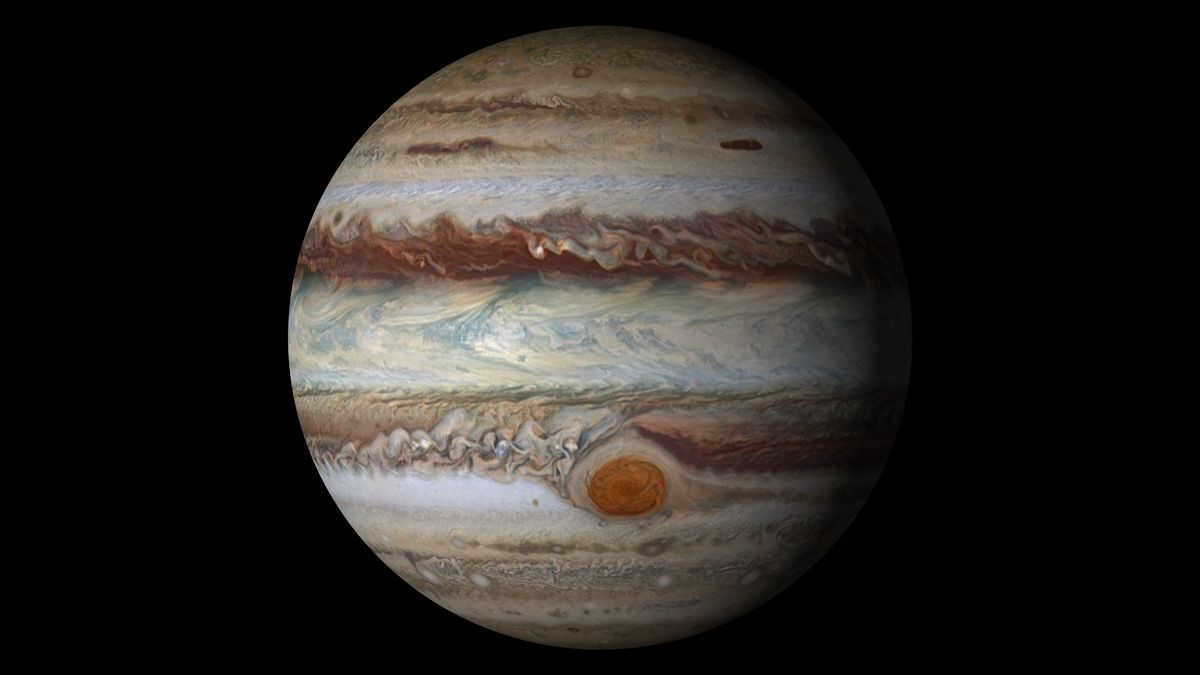
The giant planets in our solar system
The giant planets, also known as the Jupiterian planets, include Saturn, Neptune, Uranus, and Jupiter.
Jupiter is the largest planet in our solar system and is located fifth farthest from the Sun, at a distance of 5.2 astronomical units (a.u.). It emits thermal radio radiation and has a radiation belt and a wide magnetic field. Jupiter is accompanied by 69 satellites and has a ring that spans approximately 6,000 kilometers in width.
Saturn is the second largest celestial body in our solar system. When observed through a telescope, its prominent feature is its majestic rings, which were first discovered by Galileo in the 17th century. These rings are flat and encompass a collection of 62 smaller satellites orbiting Saturn. Furthermore, this planet is also surrounded by its own radiation belt.
Uranus, on the other hand, is the seventh farthest planet from the Sun. It has a total of 15 satellites, with 5 of them being visible from Earth’s surface. The remaining 10 satellites were observed with the assistance of the Voyager-2 spacecraft. Additionally, Uranus possesses its own system of rings.

Distinctive Features of the Giant Planets
All planets in this classification, particularly Jupiter, possess immense mass and size. To illustrate, Jupiter is approximately 1,500 times larger in size and over 300 times larger in mass compared to Earth.
Each of these planets rotates on its own axis at a notably fast pace. Take Jupiter, for instance, which completes a full revolution in less than twelve hours. During this time, the equatorial region experiences a greater rotational speed than the polar region. This means that the point on the planet’s surface undergoes a maximum linear displacement and maximum angular displacement as it moves around the axis. The tremendous orbital velocity results in a highly compressed structure for the giant planet, evident by a simple observation.
A massive celestial body is situated in the outer reaches of the solar system, and regardless of the changing seasons, the temperature remains consistently low. Take Jupiter, for instance, where the seasons remain unchanging due to its axis being nearly perpendicular to the orbital plane. The seasons on Uranus present an intriguing phenomenon as its axis is inclined at an 8-degree angle to the orbital plane.
One notable characteristic of the planets falling within this classification is the abundance of satellites they possess. In the case of Jupiter, 28 satellites were observed during calculations in 2001. Saturn boasts around 36 satellites, Uranus has 21, and Neptune stands out with a relatively meager count of only 8. A fascinating attribute of a massive planet is its ring system, which is present not only in Saturn but also in other planets of this classification.
One distinguishing characteristic of giant planets is their lack of a solid surface. This particular trait is closely linked to their relatively low average densities. As a result, all observable features of these massive planets are found within their respective atmospheric layers. For instance, on Jupiter’s surface, one can observe bands stretching across the equatorial region. In the uppermost layer of Jupiter, which consists primarily of helium and hydrogen, there are chemical compounds, hydrocarbon elements, and various impurities that contribute to the brown, reddish, and yellow hues of the atmospheric components. In terms of chemical composition, these planets greatly differ from their terrestrial counterparts.
Shared Characteristics of the Giant Planets
When studying the properties of the planets in the Jupiterian group, it becomes apparent that there are several key characteristics that they all have in common:
- They lack a solid outer shell.
- They have immense volumes, with the majority being composed of hydrogen compounds.
- Despite their massive sizes, they have remarkably low densities.
- They experience extreme axial velocities, resulting in compression of the planet.
- They possess ring systems.
- They have numerous satellites.
What distinguishes giant planets from Earth-like planets?
Earth-like planets and giant planets exhibit notable differences in their physical characteristics. These disparities primarily stem from their respective distances from the Sun and their masses.
Earth-like planets are situated at a closer proximity to the Sun, resulting in a greater influx of solar energy and a higher susceptibility to solar heating. The closer a planet is to the center of the solar system, the more extreme its temperature conditions become. Additionally, there are variations in the chemical composition of these planets. Earth-like planets contain fewer light gases but possess a higher abundance of refractory elements. In contrast, giant planets like Jupiter have a lower density due to their composition predominantly consisting of lighter substances such as helium and hydrogen.
The planets in the Jupiterian group have a higher rotational speed around their axes compared to other planets. This rapid rotation causes these giant planets to have a non-spherical shape, appearing compressed. Additionally, these planets possess a greater number of satellites and ring systems, unlike Earth-like planets. For instance, Mars has only a couple of satellites while Earth has just one satellite.
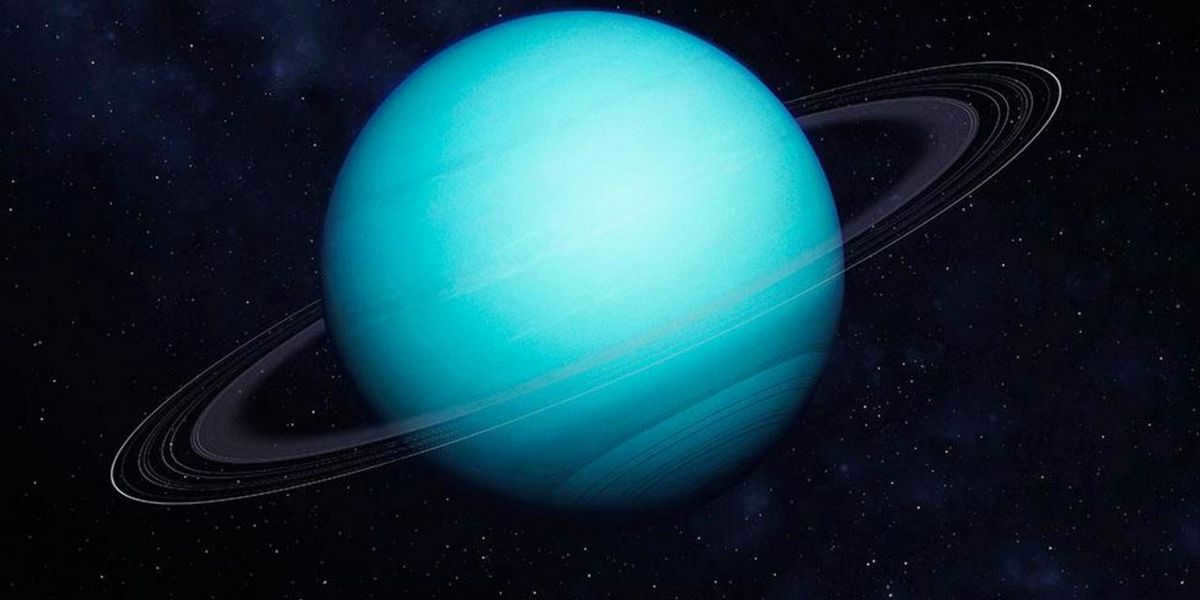

Giant Planets’ Characteristics
The weight of each member in this category is significantly more than the combined weight of all Earth-like members. However, the density of giant planets is extremely low, not even exceeding that of water. This is due to the fact that planets like Jupiter are essentially massive gas balls. Because of this, it is impossible for anyone to step foot on the surface of any of them. Nevertheless, because the planet is highly compressed, which occurs due to gravity, giant planets possess a solid core with a frozen outer layer.
All planets belonging to the Jupiterian group have multiple moons, and interestingly, some of these moons are even larger than Earth’s moon. Interestingly, the characteristics of these giant moons are quite similar to the planets in Earth’s group, with many of them having a solid surface.
In addition to this, each planet in the Jupiterian group is also surrounded by a set of rings that consist of numerous celestial objects.
The Atmosphere of the Massive Planets
Satellites orbiting massive planets
Each planet within this category possesses its own set of moons, and often in significant quantities. Among these giants, Jupiter and Saturn reign supreme with their extensive satellite systems. Moreover, new moons are continuously being detected and studied, resulting in a constant increase in their tally. Determining the minimum size and mass threshold for classifying a celestial body as a satellite of Saturn remains elusive. For example, if an object with a diameter of approximately 30 meters is discovered in close proximity to Saturn, should it be designated as a moon or simply considered a part of its magnificent ring system?
Among the satellites orbiting the massive planets, the number of smaller ones greatly exceeds that of their larger counterparts. These compact satellites typically exist in the form of loosely bound clusters and lack the spherical shape commonly associated with larger satellites. Instead, they often consist of icy materials. Due to their size, which is less than 500 kilometers in diameter, these satellites lack the gravitational forces necessary to achieve a more regular shape. As a result, they bear a striking resemblance to asteroids and the nuclei of comets. In fact, it is possible that some of these satellites are, in fact, asteroids that have been captured by the planet’s gravitational pull and subsequently released into unusual orbital paths. This phenomenon suggests that a planet may temporarily appropriate these small satellites only to lose them again after a certain period of time. Despite their asteroid-like appearance, these small satellites remain relatively poorly understood.
Each small satellite bears multiple impact marks. This is due to occasional collisions between them, as well as between bodies occupying the same space. These collisions can cause fragmentation or, conversely, fusion of particles. Consequently, determining the historical origins of these satellites is quite challenging. However, amidst the plethora of satellites, there are those genetically linked to planets, as their movement takes place near the planet’s equatorial plane. Therefore, it is highly likely that these satellites share the same origins as the planets they are attached to.
The most fascinating celestial bodies are the massive satellites orbiting planets. Jupiter boasts a quartet of these remarkable satellites, while Saturn is home to one. In terms of their characteristics, these satellites are nearly identical to regular planets. The only difference is that they not only follow the gravitational pull of the sun, but also the gravitational pull of their larger parent planets.
It is common knowledge that Saturn is the planet with a ring. However, upon closer examination, it becomes evident that all the planets belonging to the group of Jupiter have rings as well. These rings are not visible from the surface of the Earth. For instance, the ring of Jupiter cannot be observed through a telescope, but can be seen using backlighting when the spacecraft views the planet from the opposite side of the sun. The ring system of Jupiter consists of dark and small segments that are comparable in size to the wavelength of light. They have minimal ability to reflect light, but can scatter it.
Neptune and Uranus possess delicate ring systems. In reality, these planets do not have identical rings; each one has its own unique characteristics. In a lighthearted manner, one could even say that our planet has its own ring, although it is not natural but rather man-made, consisting of numerous satellites in orbit.
Understanding the connection between the properties of rings is extremely challenging. Saturn’s rings have a bright white color, while others are significantly darker. In Jupiter, the constituent elements of the ring system are notably thick.
Despite their massive diameter spanning thousands of kilometers, the rings are surprisingly thin. If we were to compare Saturn’s ring system to a piece of paper, it would be as thin as a soccer field.
Each gas giant possesses its own unique ring, and the scientific community has yet to determine their exact origins. Typically, these rings are located near the planet’s equator and rotate in sync with the planet’s motion.
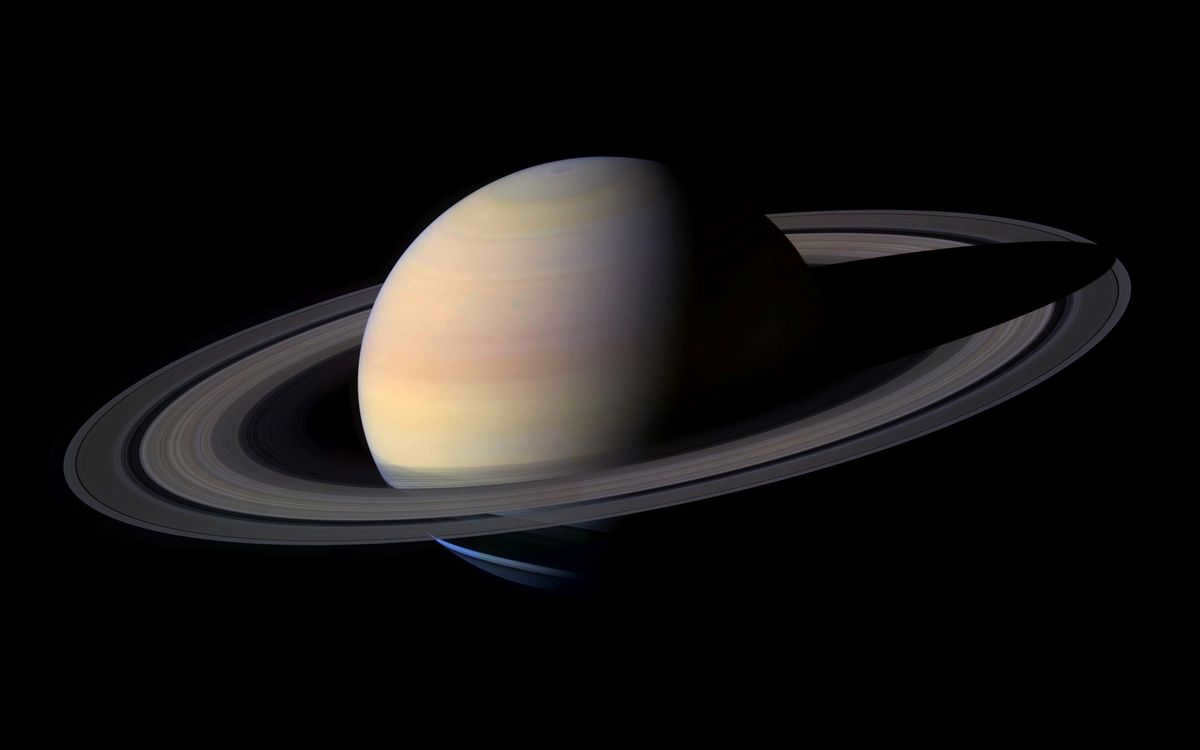

Surface Characteristics of Giant Planets
One unique aspect of giant planets in our solar system is that they lack a solid surface, as their atmospheric layers merge into a liquid-like consistency. These planets have a relatively small core within their interiors, but its volume surpasses that of any Earth-like planets.
Chemical makeup of the colossal planets
Saturn and Jupiter consist predominantly of lighter elements such as hydrogen and helium. On the other hand, Neptune and Uranus contain significant quantities of ammonia, methane, and several other less dense elements. These planets also possess additional components, albeit in smaller proportions. Scientists have observed that as the mass of a planet increases, so does its atmospheric layer. As a result, all planets, except Saturn, boast expansive atmospheres, thanks to their similar parameters. The variation in the roster of chemical elements among these celestial bodies can be attributed to the evolutionary development of our planetary system.
As mentioned earlier, the primary characteristic of the individuals belonging to the Jupiterian group is their lack of a solid shell and their composition consisting solely of light substances such as helium and hydrogen. All observable activity takes place within the atmospheric layers. On the surface of Jupiter, noticeable streaks can be observed even with small telescopes. These streaks run parallel to the equatorial line. In the upper layers of the planet’s atmosphere, various elements can be found, which imbue the atmospheric components with different hues. The density of the gas giants is several times lower than that of the members of the Earth group.
Giant planets are enormous celestial bodies composed primarily of gases and ice, rather than solid silicate rock. The solar system is home to four well-known giant planets: Jupiter, Saturn, Uranus, and Neptune. These planets are situated between the orbits of Mars and Pluto. Jupiter and Saturn are categorized as gas giants, while Uranus and Neptune are referred to as ice giants due to the presence of water, methane, and ammonia. One common characteristic among all giant planets is the existence of a robust atmosphere, significant gravitational force, and a rapid rotational speed around their axes.
Within the Solar System, the most massive giant planet is Jupiter [1], surpassing the mass of all other celestial bodies known to orbit the Sun.
Overview [ edit ]
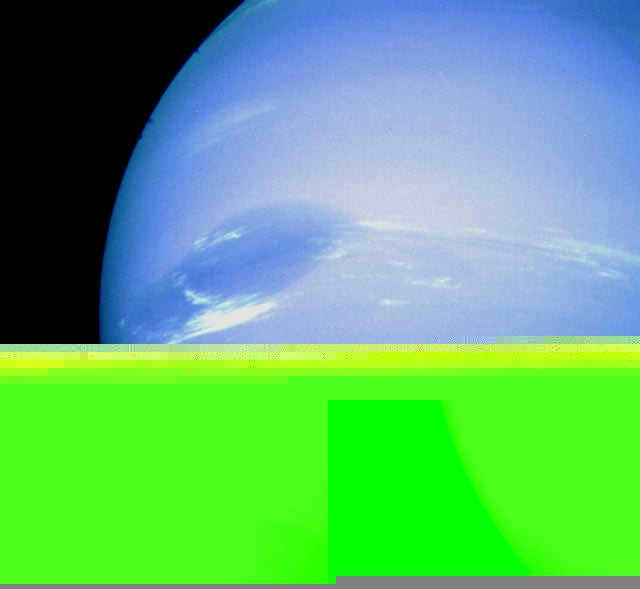

An image of Neptune captured by the AMS Voyager spacecraft. The photograph reveals the presence of clouds and massive cyclonic vortices (NASA)
Jupiter and Saturn primarily consist of light elements like hydrogen and helium, whereas Uranus and Neptune also contain hydrogen, oxygen, and nitrogen. These planets have a similar density to that of water under normal circumstances. The orbital period of all giant planets is significantly shorter than 24 hours. Their rapid rotation impacts their physical shape – for instance, Jupiter is slightly compressed at the poles [2], an observation that can be made even with a basic telescope.
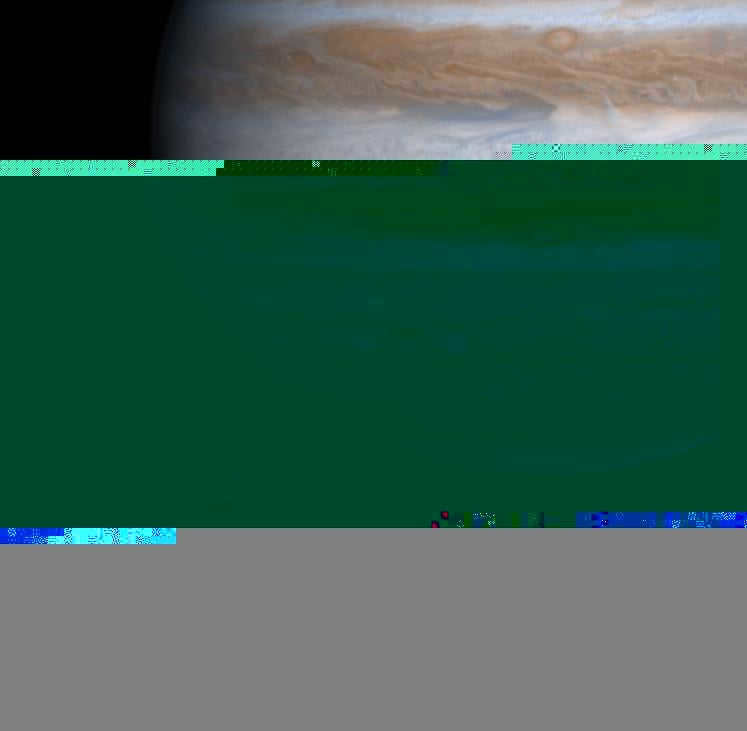
Each of the giant planets possesses an extensive collection of moons and a magnificent ring system, with Saturn’s rings being the most brilliant and compact. In contrast, Jupiter’s rings were initially identified solely through the efforts of automated interplanetary probes [4]. These rings are not observable from Earth due to their composition of opaque dust particles and relatively low density.
Research on the Enormous Planets [ edit ] .
The naked eye can spot Jupiter and Saturn, which were initially observed through a telescope in 1610 by Galileo Galilei. Nevertheless, before the latter half of the 20th century and the inaugural unmanned space missions that ventured beyond Mars’ orbit, much about the features and moons of the enormous planets remained a mystery.
Uranus and Neptune remain planets that have only been visited by two Earth vehicles, Voyager 1 and Voyager 2, while Jupiter and Saturn have been the subjects of multiple missions (Ulysses, Cassini, Galileo, New Horizons, Juno [5] ). However, up until now, only one probe has been able to explore the atmosphere of the giant planet: a descent vehicle was sent from Galileo, which managed to descend 156 kilometers below Jupiter’s cloud layer and transmit information for an hour. It then shut down – most likely due to overheating and high pressure.
Nevertheless, in 2022, there is a project for a mission to study Uranus [6], which will include a device specifically designed for descending into the atmosphere. Perhaps by the middle of this century, we will witness a second Earth vehicle delving into the depths of another giant planet.





